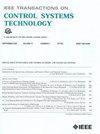Integrated Cyber-Physical Resiliency for Power Grids Under IoT-Enabled Dynamic Botnet Attacks
IF 3.9
2区 计算机科学
Q1 AUTOMATION & CONTROL SYSTEMS
引用次数: 0
Abstract
The wide adoption of the Internet of Things (IoT)-enabled energy devices improves the quality of life, but simultaneously, it enlarges the attack surface of the power grid system. The adversary can gain illegitimate control of a large number of these devices and use them as a means to compromise the physical grid operation, a mechanism known as the IoT botnet attack. This article aims to improve the resiliency of cyber-physical power grids to such attacks. Specifically, we use an epidemic model to understand the dynamic botnet formation, which facilitates the assessment of the cyber layer vulnerability of the grid. The attacker aims to exploit this vulnerability to enable a successful physical compromise, while the system operator’s goal is to ensure a normal operation of the grid by mitigating cyber risks. We develop a cross-layer game-theoretic framework for strategic decision-making to enhance cyber-physical grid resiliency. The cyber-layer game guides the system operator on how to defend against the botnet attacker as the first layer of defense, while the dynamic game strategy at the physical layer further counteracts the adversarial behavior in real time for improved physical resilience. A number of case studies on the IEEE-39 bus system are used to corroborate the devised approach.物联网动态僵尸网络攻击下的电网综合网络物理复原力
物联网(IoT)能源设备的广泛应用提高了人们的生活质量,但同时也扩大了电网系统的攻击面。对手可以非法控制大量此类设备,并利用它们作为破坏物理电网运行的手段,这种机制被称为物联网僵尸网络攻击。本文旨在提高网络物理电网抵御此类攻击的能力。具体来说,我们使用流行病模型来理解僵尸网络的动态形成,这有助于评估电网的网络层脆弱性。攻击者的目标是利用这一漏洞成功实现物理入侵,而系统运营商的目标则是通过降低网络风险确保电网正常运行。我们开发了一个跨层博弈理论框架,用于战略决策,以增强网络物理电网的弹性。作为第一层防御,网络层博弈指导系统运营商如何抵御僵尸网络攻击者,而物理层的动态博弈策略则进一步实时对抗对抗行为,以提高物理弹性。在 IEEE-39 总线系统上进行的大量案例研究证实了所设计的方法。
本文章由计算机程序翻译,如有差异,请以英文原文为准。
求助全文
约1分钟内获得全文
求助全文
来源期刊

IEEE Transactions on Control Systems Technology
工程技术-工程:电子与电气
CiteScore
10.70
自引率
2.10%
发文量
218
审稿时长
6.7 months
期刊介绍:
The IEEE Transactions on Control Systems Technology publishes high quality technical papers on technological advances in control engineering. The word technology is from the Greek technologia. The modern meaning is a scientific method to achieve a practical purpose. Control Systems Technology includes all aspects of control engineering needed to implement practical control systems, from analysis and design, through simulation and hardware. A primary purpose of the IEEE Transactions on Control Systems Technology is to have an archival publication which will bridge the gap between theory and practice. Papers are published in the IEEE Transactions on Control System Technology which disclose significant new knowledge, exploratory developments, or practical applications in all aspects of technology needed to implement control systems, from analysis and design through simulation, and hardware.
 求助内容:
求助内容: 应助结果提醒方式:
应助结果提醒方式:


